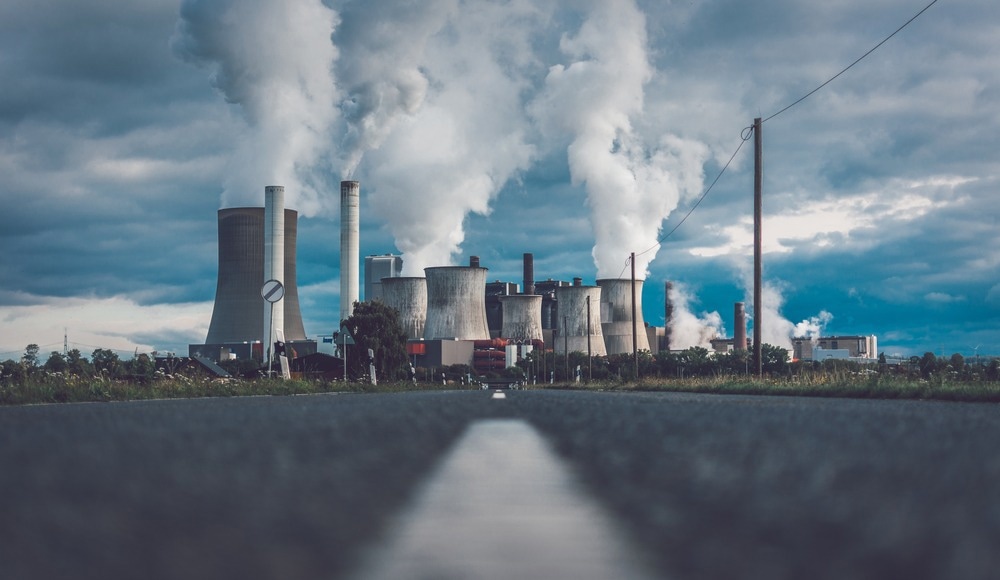In an article published in Energies, researchers characterized and compared the microstructural features of the main morphotypes occurring in the char obtained at 850–950 °C by fluidized bed gasification of lignite from the "Szczerców" deposit (Central Poland), bringing new insights into the knowledge on the origin of these morphotypes.

Study: Raman Spectroscopy of Lignite Gasification Char Morphotypes. Image Credit: Markue/Shutterstock.com
Poland is one of the few nations in Europe where bituminous coal and lignite are still primarily mined domestically. Due to Poland's large lignite deposits, the idea of utilizing coal in methods other than direct burning recently gained great attention. Clean coal technologies, including the gasification process, are major topics of discussion. For years, numerous components of coal gasification technology have been researched.
Coal gasification has recently gained particular relevance due to the pressing need to slow down climate change and increased oil and gas costs.
Numerous nations, namely Poland, the United States, China, and Germany, engage in extensive lignite mining. It is crucial to develop regional coal gasification projects to satisfy national demands and concurrently ensure energy security and reliance on domestic resources. Several studies, often using coal from the USA, Canada, Japan, and China demonstrated that lignite could be used for gasification.
Previous Studies
Previous studies showed the value of petrographic analysis in assessing a coal's readiness for gasification and forecasting its behavior during the process. The significance and function of distinct macerals in the gasification process were emphasized. Previous studies also investigated the petrographic features of chars obtained by gasification.
One of the most important variables influencing char's reactivity during gasification was discovered to be its structure. Raman spectroscopy was widely used to evaluate coals' chemical and structural development during gasification and to ascertain the characteristics of the chars produced.
What Previous Studies Lack
The particular petrographic elements of chars received minimal attention and the research concentrated on bulk samples instead.
As a result, the influence of structural characteristics of the morphotypes on char reactivity is unknown. It is also unknown if the variations in morphological traits that serve as the foundation for classifying the char morphotypes are connected to variations in their microstructural properties.
Therefore, this study sought to further the understanding of these morphotypes by characterizing and comparing the microstructural characteristics of the major morphotypes found in the char generated by fluidized bed gasification of lignite from the "Szczerców" deposit (Central Poland).
How the Study was Conducted
Gasification
The substance studied is the byproduct of gasifying lignite from the "Szczerców" deposit. In a pilot circulating fluidized bed reactor, the lignite was gasified using carbon dioxide as the gasification agent.
Nitrogen and oxygen made up the remaining parts of the gasification mixture. A total of 97 kg of coal produced 21.5 kg of char. A typical channel sample of char was gathered to prepare for microscopic and spectroscopic studies.
Petrographic analysis, Raman spectroscopy and statistical analysis
The method utilized to categorize coal chars was the foundation for the petrographic analysis.
Petrographic analysis was carried out on the surface of the polished parts, which were prepared following ISO requirements, using 500 evenly spaced points.
Polished portions were subjected to a Raman spectroscopic analysis, which enabled the identification of char morphotypes. Using a Raman microscope, the measurements were carried out on 32 inertoid to 22 fusinoid randomly selected spots.
Tukey's honestly significant difference (HSD) multiple comparison test and analysis of variance (ANOVA) were used to determine the statistical significance of the differences in the spectral parameters between the morphotypes. Before that, the Shapiro-Wilk test was used to determine if the distribution was normal, and the Levene test was used to determine whether the variances were equal.
Significant Findings of the Study
The researchers found that the examined lignite char predominant elements are inertoid and crassinetwork, with minor contributions from fusinoid and tenuinetwork.
Textinite is the main source of tenuinetwork, attrinite is the source of crassinetwork, and gelified macerals such as ulminite and densinite are transformed to produce inertoid. There are similarities between the microstructures of inertoid and fusinoid as well as crassinetwork and tenuinetwork.
Compared to crassinetwork and tenuinetwork, fusinoid and inertoid have more extensive aromatic systems, fewer alkyl-aryl structures, and more ordered microstructures. Although fusinoid and inertoid have diverse microscopic characteristics and were created from various starting materials, their microstructural characteristics converged after gasification. Finally, the discrepancies in the network morphotypes' (crassinetwork, tenuinetwork) microstructural properties do not correspond to the different morphological traits.
Reference
Rafał Morga and Barbara Bielowicz (2022) Raman Spectroscopy of Lignite Gasification Char Morphotypes. Energies. https://www.mdpi.com/1996-1073/15/16/6057
Disclaimer: The views expressed here are those of the author expressed in their private capacity and do not necessarily represent the views of AZoM.com Limited T/A AZoNetwork the owner and operator of this website. This disclaimer forms part of the Terms and conditions of use of this website.